Landings On The Coast
East Lothian is gifted with lots of lovely, sandy beaches along its coastline, beloved by tourists and locals alike. While they may look at such sandy expanses with eyes of anticipation and admiration, others in 1940 worried that the beaches offered the enemy a means to invade.
The army was swift to employ the means to forestall a sea-borne invasion. Any and all such potential landing places were obstructed with large concrete blocks and/or wooden poles set in cement to prevent glider landings or to obstruct landing craft on the beaches. These covered all the beaches from Fisherrow Sands in the west to Belhaven Bay in the east, and taking in Seton Sands, Gosford Bay, Aberlady Bay, Gullane Bay, Broad Sands, Peffer Sands, Ravensheugh Sands and Tyne Sands. These defences were intended to make any landing more difficult and, should the enemy get ashore, to slow down tanks and vehicles attempting to move inland.
Considerable numbers of these war-time defences are still in situ as the following photographs show.
Anti-tank blocks
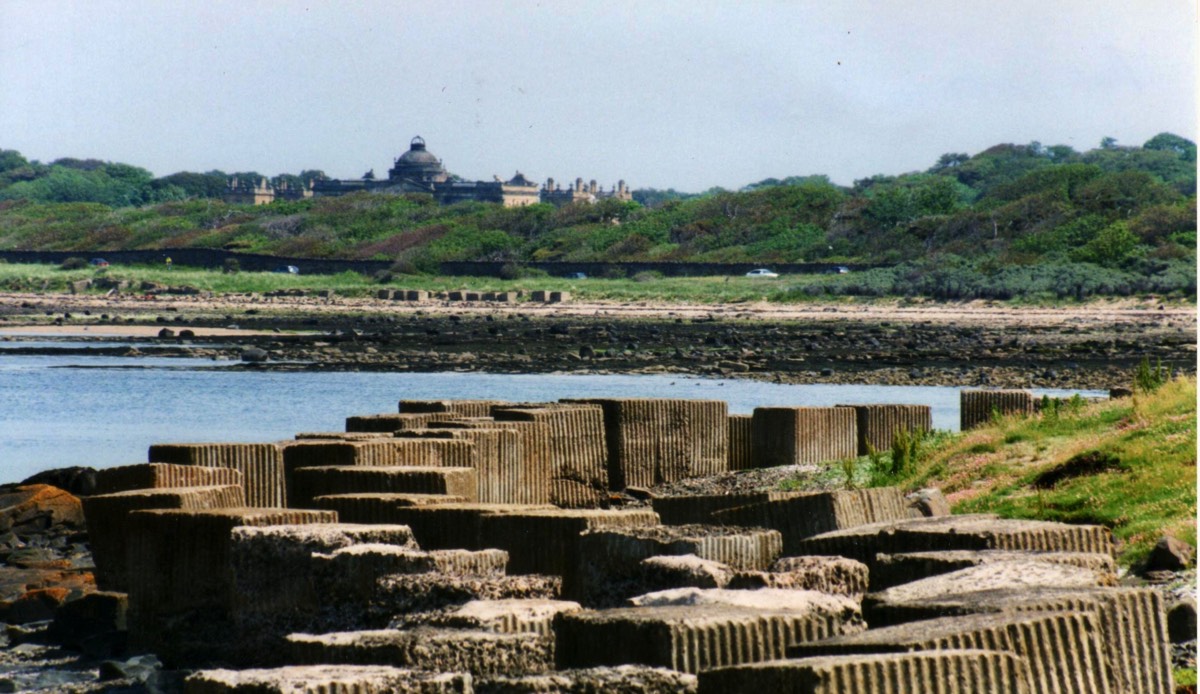
Anti-tank concrete blocks on Longniddry Bents near Gosford House.

Anti-tank blocks curving through the sand dunes behind Gullane Sands
Above & below (D. Haire)
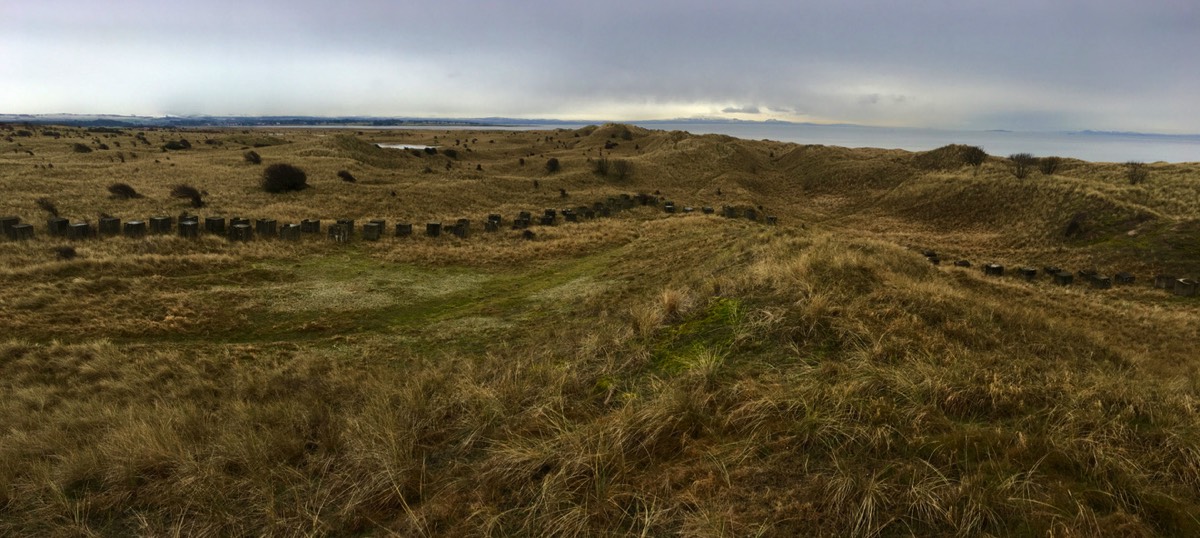

The remains of a beach obstacle, far out on Gullane Sands. The pole, anchored as shown in the photograph below, has been cut off after the war. (D. Haire)
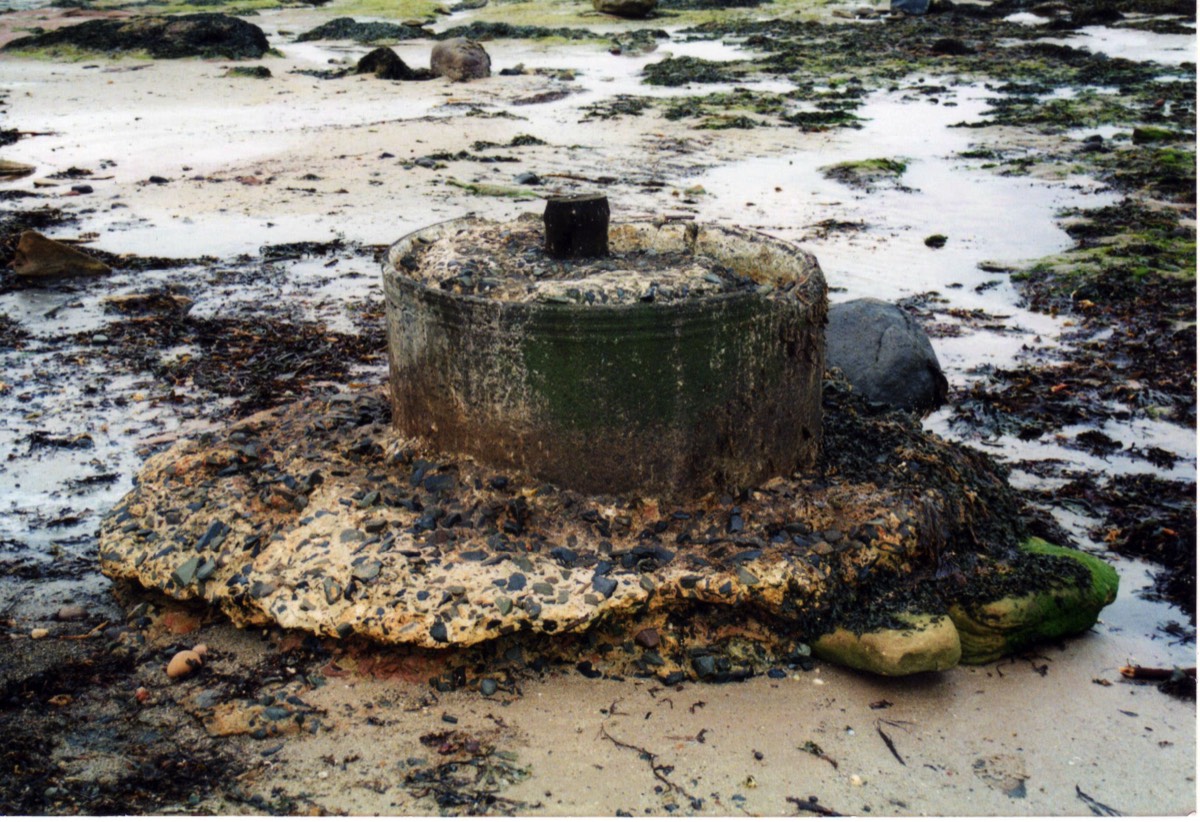
Time and tide have revealed the base of one of the anti-glider beach defences.
In all probability the Newfoundlanders or the British Honduran Timber Corps cut down the wooden posts in the forests of East Lothian.
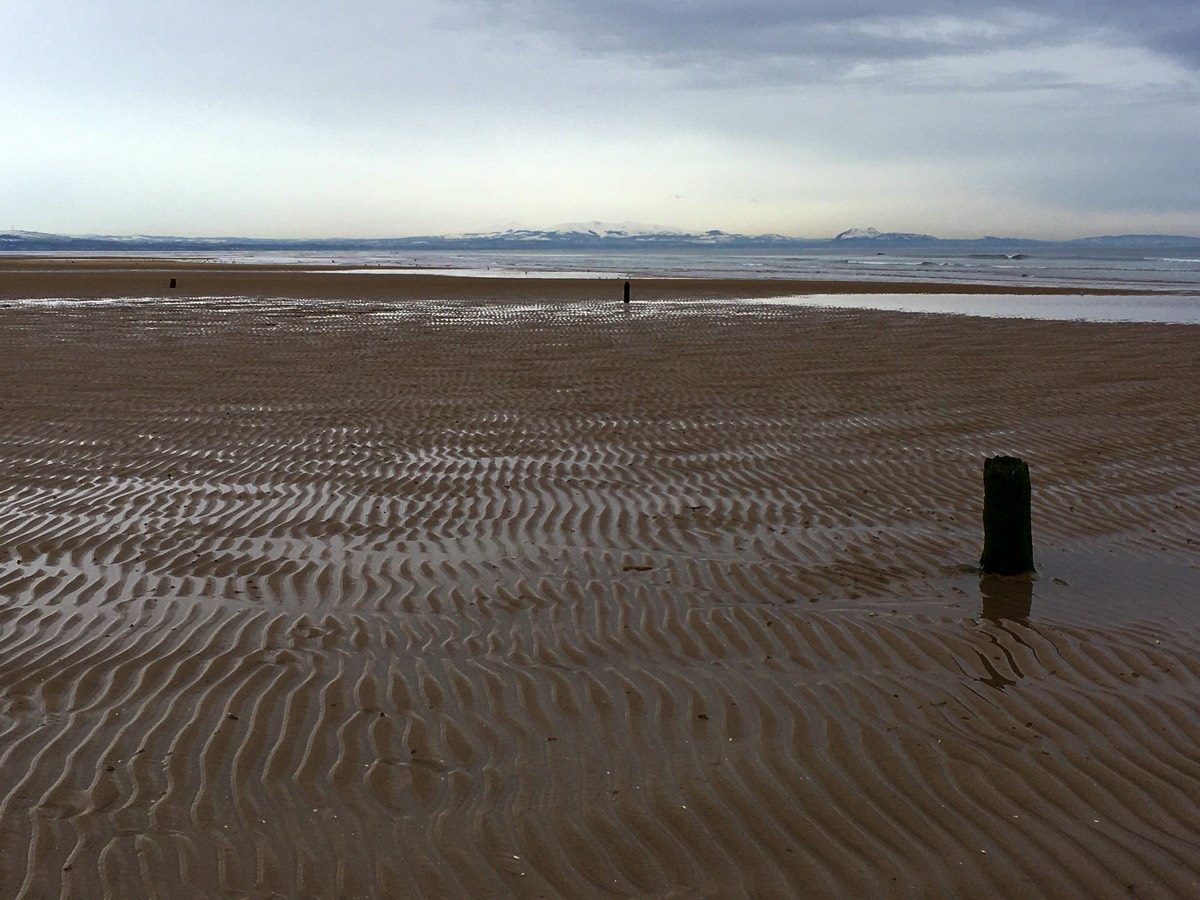
You may just be able to make out the stumps of three posts (beach defences) still embedded in Gullane Sands. These lie not far from the wrecks of the XT craft. When in use they may well have had mines attached.
(D. Haire)
Roadblocks
Roadblocks were built at all important road junctions and were manned by the Home Guard. Many were given added protection in the form of flame traps. These Flame Fougasses were designed to spray petrol on tanks stopped at a roadblock. The petrol would then be ignited by one of the defenders, probably by throwing a Molotov Cocktail or other incendiary device. The resulting fire was not intended to destroy the tank, but would have starved its crew and engine of oxygen, thereby killing the crew and putting the tank out of action.
There were forty-five separate flame traps in East Lothian, of several different types, and had they been used it seems that they would have been highly effective in stopping an armoured column. This tactic would have been particularly effective whenever the ground sloped steeply away on either side of the road, thereby preventing tanks behind the lead vehicle from escaping the obstruction. Measures were also taken to crater roads using explosive charges in the path of an invading force, making the road impassable to road vehicles, and thereby often holding up an entire column.
Known sites of Flame Fougasses included those at Luffness House, Heugh Brae, North Berwick, Danskine Brae, Aberlady, Longniddry and Dunbar harbour.

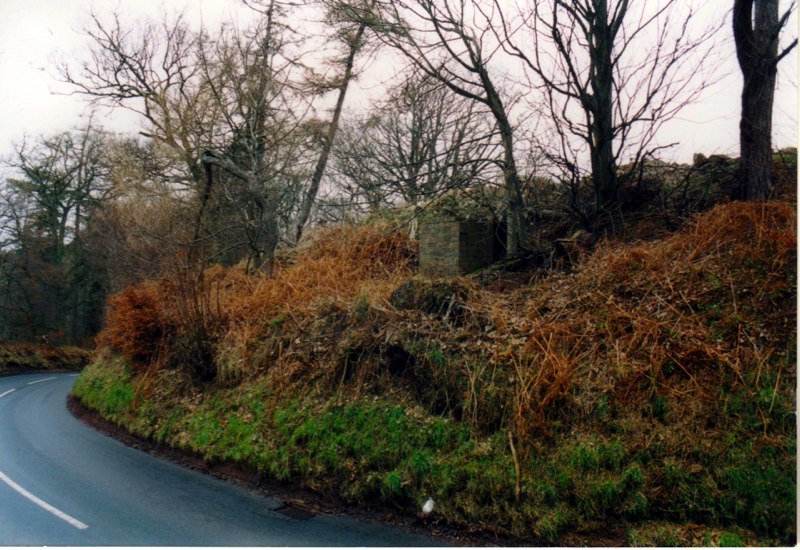
These two pictures show the control position of a Flame Fougasse above the road at Danskine Bray, Gifford to Whiteadder Road.
Dunbar Harbour Defences: Its Flame Fougasse
This was set up at the entrance to Dunbar harbour and would have sprayed petrol onto the surface of the sea from perforated pipes. This would then have been ignited to, essentially, set the sea on fire. Thus, any hostile force attempting to enter Dunbar harbour would have been incinerated. The technique was also tried out on the south coast of England, but was never used in action.
Longniddry Flame Fougasse
William J. Watt gives an eyewitness account of the Longniddry Flame Fougasse:
“I lived in Longniddry from 1927 until my wife and I moved [away]… twenty years ago. [There was a Flame Fougasse] at Longniddry Station.
… the layout of the road junction …has now been replaced by a more modern layout, and the green triangle of grass plus the trees in it were removed along with part of the wall, but the original was untouched where the flame was sited.
It was on a platform high up in the trees opposite a dip in the road between the two old telegraph poles. My recollection is that the tank was as high as the telegraph poles. A vertical pipe from the tank was connected to a horizontal pipe fixed to the top of the wall. This pipe had a line of small holes along its length. Opening a valve inside the wood allowed the petrol to escape under a considerable pressure head.
I only saw this Flame operated once. Army personnel for the Home Guard laid on a demonstration. The petrol valve was opened and created a huge spray, which reached the opposite side of the road. I think the original idea was that a limited amount of petrol would be released, but the valve remained open. An Army Sergeant with a Very pistol fired a round (from the top of the Goods Yard) into the pool of petrol in the road dip, while fuel was still coming out at force.
It created one of the fiercest of fires I have seen, destroying the grass banks, the railway sleeper fence, scorched the telegraph poles and burned the surface off the road. Very effective! This little episode (about 1940-41) was never repeated!”
William J. Watt
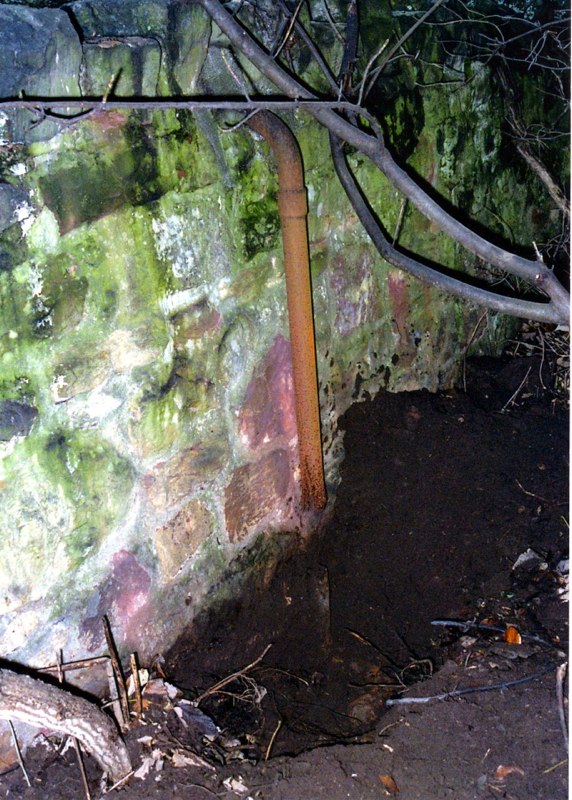
Longniddry Flame Fougasse Fuel Pipe.
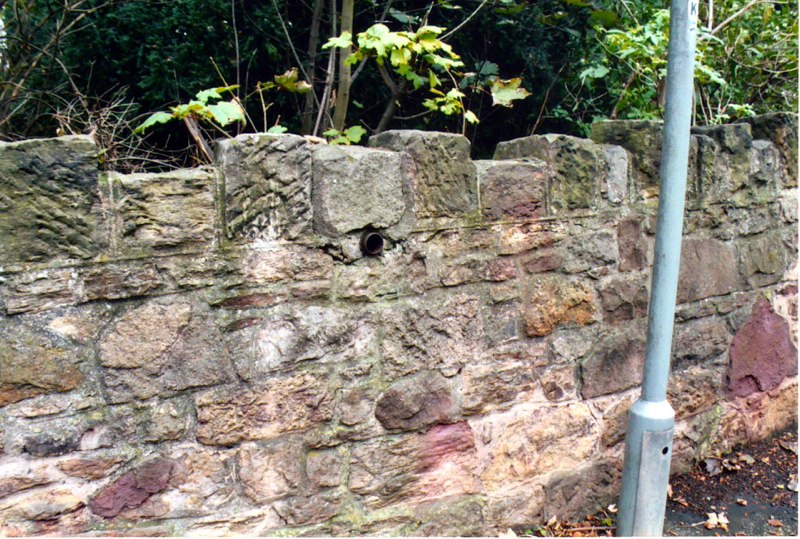
Longniddry Flame Fougasse Fuel Pipe Outlet on the road side of the wall.
Machine Gun Posts
A network of around thirty machine gun posts set up to tackle soft skinned vehicles carrying troops also covered the county. Whilst the machine gun posts would eventually have been overrun, they would have required time for German troops to deal with; precious time which would have made it possible for mobile reserves to be called upon to deal with the invading force. Similarly seven pillboxes were constructed (at Levenhall, Goshen, two at the Wallyford Junction on top of the east coast railway line, Crookston School near Wallyford, Halfway House at Whitecraig and Prestonlinks Colliery) to provide stronger defensive positions and these too would have had a crucial delaying role.
Observation Posts
More than forty observation posts would have played an important role in tracking the movements of the invading force, thereby alerting the defences and providing useful intelligence on the strength of the attackers and their equipment.
Dunglass Burn - A Vital Communications Point
There was, however, one location in East Lothian that was considered especially vulnerable, so much so that an extensive network of defences was built, resulting in its classification as a Defended Area. The bridges crossing the Dunglass Burn, just inside the boundary with Berwickshire, carried the A1 and the east coast railway line, crucial arterial routes that would have been a tempting target for a small commando-style raid. Rumour had it that there was an off-shore trench in which U-boats would lie in wait to pounce on unsuspecting ships and this would also provide the perfect position for a U-boat to wait before surfacing to send commandos ashore at night. Consequently sizeable resources were devoted to the defence of the bridges.
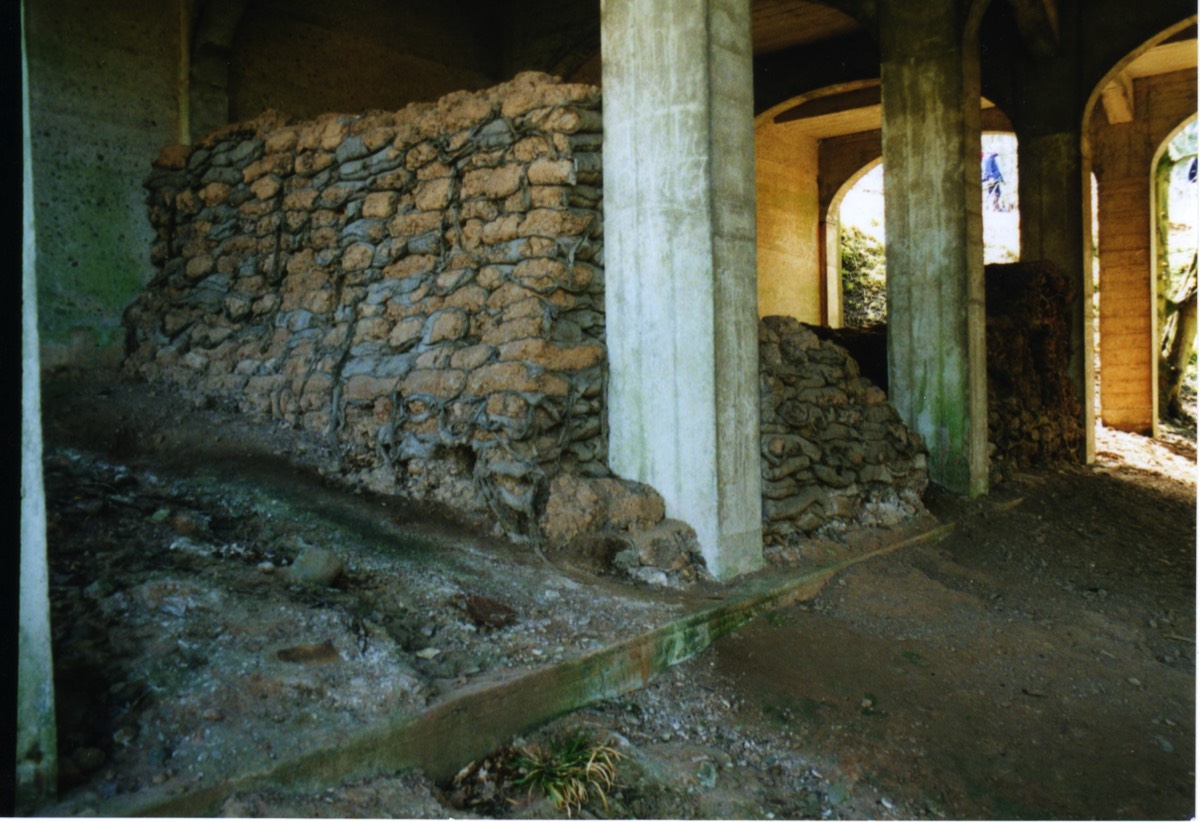
The remains of sandbagged defences at Dunglass Bridge.
West Garleton House
This became the Head Quarters of 155 Infantry Brigade when it returned to East Lothian after evacuation from France in 1940. The county on was high alert against the possibility of an invasion. This H.Q. is described by J.D. Thomson in the section, ‘Fighting Back: Military Camps’.

